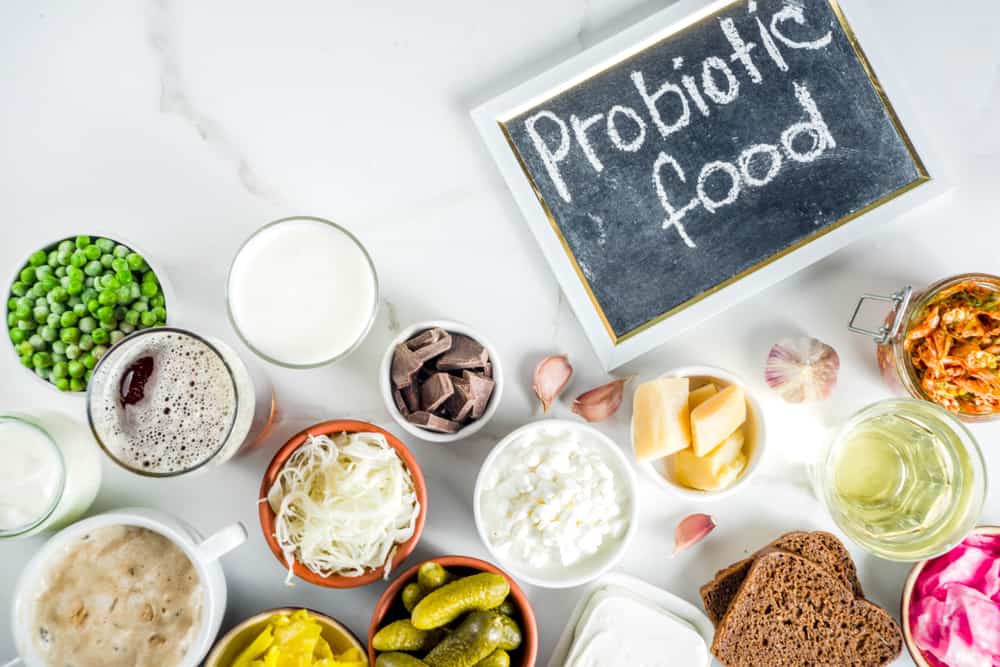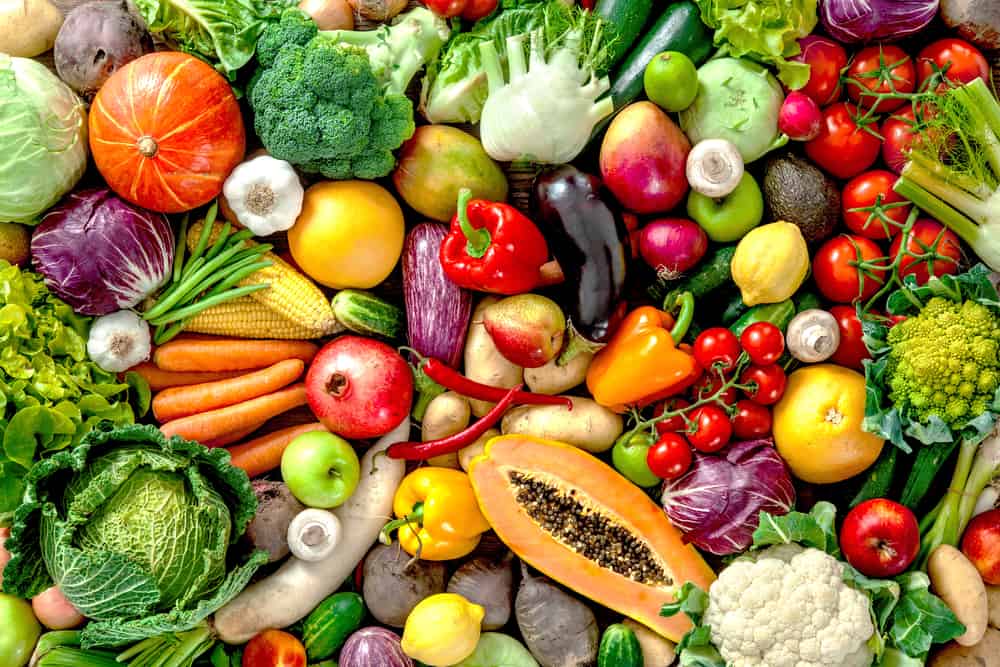The Microbiome Diet
Picture this – it’s Monday at 8 AM in New York City, and the streets are bustling with busy commuters quickly moving in all directions. Think about that activity at the microscopic level, and you have a glimpse of what the microbiome looks like in your body.
Instead of thousands of people moving outside, according to Nutrition Reviews, the body has trillions of microorganisms consisting of thousands of species zipping around! These include parasites, fungi, bacteria, and viruses, but they coexist peacefully in even the healthiest human body.
The largest number of these “bugs” are found in the large and small intestines but travel throughout the body. The microbiome is a supporting organ because it plays a crucial role in promoting the body’s regular daily operations.
There are many health benefits of having a range of good gut flora, but they can become less beneficial and diverse for various reasons. This is where the microbiome diet claims to save the day. This diet aims to improve microbiome diversity, which has a positive impact on your overall health.
If you are interested in starting the microbiome diet, it is crucial to learn more about the science behind microbiomes, how the diet works, supplements you can consume, the research behind the diet, and its pros and cons.
Keep reading to learn more!
The Origins of Microbiomes
Every human has a unique network of microbiota determined by one’s DNA. A baby is initially exposed to microorganisms as an infant during delivery and through the mother’s breast milk. The diversity of microorganisms the infant is subjected to entirely depends on the species within the mother.
As the baby grows and is exposed to different environmental and diet changes, the microbiome will also be altered, benefiting one’s health or being at a higher risk for illness.
The source of microbes from your environment does not stop after childhood or diet changes. Humans are exposed to them every minute of every day. Every time you kiss another human, eat a meal, apply a cosmetic, or pet an animal, you are impacting the composition of your internal microbiome.
Since humans are exposed to different factors daily, it is tough to study the microbiome since it is specific to that individual.
These microorganisms communities exist in complementary and unique blends. They can be found on every part of the human body, from mouth and eyes to skin and genitals, and the gastrointestinal tract. These bacterial clusters from various regions of the body are known as flora. There are several types, including skin, oral, vaginal, and gut flora.
When you’re trying to improve your microbiome health, the foods you eat are important. Using an app like Noom makes it easy to keep track of everything.
The Breakdown of Microbes
The microbiome comprises helpful and potentially harmful microbes. Most microbes are considered symbiotic, which means the human body and microbe benefit, and a smaller percentage are pathogenic (promote illness). Others in the community are commensal, meaning they are just along for a free ride. In healthy bodies, symbiotic and pathogenic microbes coexist without issues.
However, suppose there is a disturbance within that balance due to specific diets, infectious illnesses, bacteria-destroying medications, or antibiotics’ prolonged use. In that case, dysbiosis ensues, thus halting these everyday interactions. The result is the body becomes more susceptible to illness.
Why the Microbiome is Important
Research published in the World Journal of Gastroenterology indicates the microbiome plays a significant role in the human body’s daily functioning by stimulating the immune system, synthesizing amino acids and vitamins, and breaking down toxic food compounds.
For instance, sugars are absorbed into the upper section of the small intestine quickly. Complex carbohydrates, such as fibers and starches, travel down to the large intestine because they don’t digest quickly. In the large intestine, the microbiome helps break down these indigestible compounds with specific enzymes.
The fermentation of difficult-to-digest fibers results in the production of short-chain fatty acids that the body uses as a nutrient source and plays a role in chronic illness prevention and muscle function. Clinical studies have proven that short-chain fatty acids could help treat various illnesses and ailments, boost brain function, aid the immune system, and decrease inflammation.
The microbiome found in a healthy human also offers protection from pathogenic bodies that enter the body by eating or drinking contaminated food or water. The microbes found in the colon, which is a low oxygen environment, are thought to prevent the excessive growth of harmful entities that will compete for nutrients and mucus membrane attachment spots.
According to research published in Infection and Immunity, these sites are a significant location of immune activity, and antimicrobial protein production in the gut helps regulate an individual’s metabolism and mood.
When your microbiome is in balance, the entire body benefits by having an optimal digestion process. If someone struggles with a gastrointestinal issue, then a balanced microbiome can improve the condition to help get health the GI tract.
A healthy microbiome also leads to a strong defense against allergies, boosted metabolism, and possible weight loss. These microbes are powerful because they can regulate your cravings, dictate what you eat, and determine how hungry you feel. Lean people tend to have a more diverse microbiome than those with weight issues.
Additional benefits of having a healthy and balanced microbiome are better sleep, supporting bone development, manufacturing natural antibiotics, reducing joint and muscle pain, clearing acne and eczema, and producing critical nutrients, vitamins, and minerals.
On the other hand, unbalanced gut bacterial levels can increase the risk of various gastrointestinal issues, blood and heart problems.
The Function of Probiotics
The science behind the microbiome proves its benefit to living a healthy life, but how can you ensure you receive enough of the right microbes? Science and marketing have worked together to promote foods and supplements with probiotics, which contain microbes or pills with active bacteria, both of which are marketed to promote a healthy digestive tract.
Probiotic supplement sales are expected to rise over the next decade due to education and awareness of the benefits and currently make up several billion-dollar industries.
Dr. Allan Walker, Profession of Nutrition at the Harvard Medical School and Harvard Chan School of Public Health, notes that despite conflicting published research, there are situations where probiotic supplements are beneficial. First, probiotics are beneficial at either end of the age spectrum when a human’s microbes are not as robust.
At either of these ages, probiotics can heavily influence massive bacterial colonization to process more effectively. When there is stress to the body, probiotics could help replenish normal bacteria in the intestine after antibiotic use or reduce diarrhea’s severity when exposed to pathogens. These situations are examples of disruption of microbiome balance within the intestine where probiotics help reach an equilibrium.
What types of probiotic foods best fit into a healthy, nutritious diet? Tracking your food intake with an app like Noom allows you to choose the best probiotic foods for the new you. Want to see how it works? Take a look at the [promoted_product_link_offer] they’re offering for a limited time.
How Diets Impact the Microbiome
In addition to medication use, family genes, and the environment, research from the Journal of Lipid Research says a person’s diet plays a significant role in determining the type of microbes that live in the gut. These collective factors produce a unique microbiome that is specific to the individual.
For instance, a high-fiber diet impacts the amount and type of microbes found in the intestines. The only way dietary fiber can be broken down and fermented is by enzymes living in the colon. The result is the production and release of short-chain fatty acids. In turn, this lowers the colon’s pH, thus determining the type of microbes that can survive this more acidic environment.
Having a lower pH limits harmful bacterial growth. Short-chain fatty acid research explores the wide-ranging impacts of harmful bacteria on health, including maintaining normal blood glucose and cholesterol levels and stimulating immune cell activity.
Food that helps increase short-chain fatty acid levels includes indigestible fibers and carbohydrates. In some circles, these fibers are considered prebiotics because they feed beneficial microbes. There are supplements comprised of prebiotic fibers but consuming healthful foods containing prebiotics is a better option.
It is crucial to avoid a high intake of prebiotic foods, especially when suddenly introduced to the body, increasing bloating and flatulence. Those with gastrointestinal issues should only introduce these foods in small amounts to build the body’s tolerance. Continued consumption will likely result in a higher tolerance will few side effects.
It is critical for those without food sensitivities to gradually employ a high-fiber diet since the previous fiber intake could have reduced the number of beneficial microbes while increasing pathogenic bacterial growth that tends to thrive in a low acidic ecosystem.
How to Recognize if your Gut Needs Support
There is a lengthy list of symptoms because of poor digestive health. One point that makes digestive issues challenging to navigate is similar symptoms can also have different causes based on your diet, environment, and activities.
Also, these symptoms could occur across the entire body, not just in the gut. Three main issues exist related to the gut that can result in symptoms: food allergies, sensitivities and intolerances, intestinal permeability, and an unhealthy microbiome caused by various factors.
Diet Phases
In addition to probiotics that help reach that balance, the microbiome diet can consistently aid in promoting a healthy body. The microbiome diet has three phases, with the first two phases taking seven weeks to complete and the final stage maintaining a long-term diet. Many participants have not found the first and even second phases necessary and just skip to the final phase.
Phase 1: Following the Four R’s
The first phase lasts for three weeks and focuses on the four r’s: removal, repair, replace, and reinoculated. During the removal segment, disruptive bacteria, food, toxins, and pathogens are eliminated from the body. These harmful objects typically contribute to an unbalanced microbiome because they include added sugar, processed foods, pesticides, and antibiotics. While these entities are being cleansed from the digestive system, the body can repair the gut lining, replace pancreatic enzymes, stomach acid, and reinoculate beneficial bacterial strains. To successfully follow phase one, avoid these foods:
- Peanuts
- Soy
- Gluten products
- Packaged foods
- Eggs
- Grains
- Potatoes and corn
- Peanuts
- Legumes
- Deli meat
- High-fructose corn syrup
- Hydrogenated or trans fats
- Fried foods
- Artificial sweeteners
- Fruit juice
At this stage, it is advisable to focus on plant-based foods that help grow microbiome diversity. These foods include prebiotic foods like onions, artichokes, garlic, probiotic foods like kimchi and sauerkraut, and healthy fats from avocado, seeds, nuts, and fish. Other excellent additions are fruits and oils for cooking. For those that choose to eat animal proteins, focus on grass-fed meat and wild fish.
The replace segment advises you to eat spices and herbs to replace your digestive enzymes and stomach acid with higher-quality consumables. Finally, the reinoculated section promotes foods with high probiotic and prebiotic qualities to repopulate your digestive system with helpful bacteria.
Restrictive diets can be hard to stick to over the long term. That’s why with Noom, no food is ever off-limits. They use psychology to help you form solid habits that stick with you. Check out their [promoted_product_link_offer] today!
Phase 2: The Metabolic Boost
Following the first phase, the microbiome diet allows you to introduce other foods for the next four weeks, including gluten-free grains, beans, sweet potatoes, yams, goat or sheep’s milk, mangos, peaches, melons, pears, kefir, and organic, free-range eggs. The purpose of these foods is to help grow your gut healthier. Also, during this phase, you must avoid specific foods but only for 90-percent of the time. This means that a few times per week, you can enjoy gut-damaging foods.
Phase 3: Lifetime Maintenance
Your gut should be almost fully healed by the final phase and rebalanced with good and bad bacteria. The final phase focuses on maintaining the results from the first and second phases. Since the first seven weeks involved repairing the gut to bring the microbes back to balance, you must avoid foods that damage the gut lining and flora. To help with maintenance during this phase, it is important to listen to our body’s cues and pay attention to the foods that work and those that don’t.
Supplements
As part of the dietary changes, the microbiome diet also recommends consuming these supplements during the first phase:
- Acids and enzymes – regularly consume a small amount of apple cider vinegar (great on salads) to encourage stomach acid creation. Also, take supplements that contain digestive enzymes, including lipase, protease, and amylase, which assist with breaking down carbohydrates, proteins, and fats in food.
- Antimicrobials contain berberine, garlic, oregano oil, caprylic acid, and grapefruit seed extract, which kill pathogens.
- Gut lining supplements include vitamin D, zinc, marshmallow, slippery elm, glutamine, and quercetin to help the intestinal lining.
- Probiotics are products containing between 50 and 200 billion bacteria with strains including Plantarum, Lactobacillus acidophilus, Acidophilus reuteri, Rhamnosus, and bifidobacterial.
General Guidelines
During the maintenance phase of the microbiome diet, there are some general guidelines you should follow. First, always use a high-quality water filter to ensure you are drinking the cleanest water possible. Second, eat organic foods to limit exposure to hormones and pesticides and change natural personal and household products. Third, avoid the overuse of antibiotics and nonsteroidal anti-inflammatory drugs. Finally, avoid proton pump inhibitors, which result in the reduction of stomach acid production.
What Research Says About the Diet
While there are conflicting studies and thoughts on this diet, no studies have conclusively proven that it improves an individual’s microbiome or is a treatment for various health conditions. However, there is some evidence to support the microbiome diet’s benefits that can improve human health.
Since the microbiome plays such a critical role in inflammation and immunity, having a healthy microbiome could reduce the risk of various illnesses. A 2014 study published in Nature found that dietary changes could impact the abundance of different species of bacteria within the human digestive tract. This indicates that switching to another diet will alter the microbiome.
Furthermore, a 2019 study in Frontiers in Nutrition found that a plant-based diet could promote a healthy gut microbes diversity. Given that the microbiome diet is built on consuming multiple plant foods for protein, it could share many benefits.
As mentioned, an additional critical aspect of the diet is the consumption of probiotics. While probiotics’ benefits involve ongoing research, a study in Nutrients found that probiotics could assist with various gastrointestinal conditions. Scientists are still working tirelessly to understand how specific bacterial species and foods impact the microbiome.
Another 2019 study in Cell Host and Microbe shows that similar foods could impact human microbes differently, depending on their DNA. This indicates that the way a diet influences the microbiome is personalized. If genetics affect the individual microbiome, humans may need a more customized approach to nutrition than the microbiome diet. This is particularly true for those with underlying health conditions. In general, scientists need more research on food choices and how probiotic strains influence the microbiome.
You can take probiotic supplements or eat probiotic-rich foods, but in either case, you need to support your new gut health with a natural, whole-food diet that’s rich in nutrients. Track your food intake with an app like Noom today.
Pros and Cons of the Diet
Like with any diet, there are many pros and cons, including:
Pros
Could Protect from illness
While the jury is still out on this point regarding the actual diet, many of the foods required for the regime have protective qualities against various illnesses. While other factors contribute to illness vulnerability, a healthy diet certainly contributes.
Gut Health Improvement
The types of fruits and vegetables required for the diet are gut-friendly because they boast prebiotic and probiotic properties. These two categories work together to achieve excellent gut health, which can impact your overall health.
Immune System Boost
By nurturing your microbiome with healthy food choices, you are also nurturing your body’s ability to fend off illness. This diet helps keep your immune system in tip-top shape.
Limits Sugar Consumption
Massive amounts of sugar in your diet, from processed foods and other unhealthy sources, can drive many symptoms and illnesses. However, by limiting your sugar intake through the microbiome diet, you can improve daily functioning.
Nutritious Food Choice Selection
Evidence suggests that having a diverse and healthy microbiome is generally beneficial to human health. The microbiome diet is heavy on plant-based foods, which could encourage participants to eat more of this food category. Each of these food groups delivers vast amounts of vitamins and minerals with health-boosting properties.
Weight Loss
Since this regime requires you to consume vegetables, fruit, and lean protein mostly, you will likely lose weight. Remember, it is still possible to have an excess of calories when eating healthy foods.
Cons
Expensive
Since the microbiome diet encourages purchasing and consuming organic foods, cage-free eggs, and free-range meats, your grocery bill will skyrocket. This is often a limiting factor for many who want to try this diet.
Restrictive
This diet is incredibly restrictive, especially during phase one. It is not typically necessary for most to eliminate as many foods as required by the first phase. Eggs, legumes, corn, dairy, and soy can still be a healthy part of most participants’ diets. Many notice the diet’s benefits due to its focus on fruits, vegetables, lean proteins, and healthful fats. However, others may have side effects from the restrictions the diet recommends. The body eventually adjusts to an intake of certain foods. The consumption of probiotics must be individualized as not all guts benefit from the same microbe strains.
Unconfirmed Claims
Health claims related to the human gut have not been fully substantiated by independent verification and may be exaggerated. The diet also has not been thoroughly studied on efficacy, safety, and effectiveness. While it may seem compelling on paper, everyone reacts differently due to their DNA, so it is difficult to study every participant.
Also, while supplements play a significant role in the diet, it may not be necessary for a participant to consume all supplements. Many of the herbal supplements do not have high-quality research that supports consumption and, therefore, could be unnecessary. If you consider the diet, always consult a doctor before taking any supplements, especially if breastfeeding, pregnant, having a chronic health condition, or taking medication.
It is always beneficial to consult with a dietitian before following any restrictive diet to ensure it is well-balanced and receive the required nutrients. If you experience digestive issues, consult with a doctor before starting the diet. These symptoms could be signs of an underlying condition that could need immediate attention.
Current and Future Research Areas

Current Research
Some of the most common questions and topics that are currently being researched to find answers include:
- How do substances produced by metabolism and the microbiome impact human health and illness?
- What factors influence the balance and framework of an individual’s microbiome?
- Addressing regulatory issues and the development of probiotics as a functional food.
- Microbial metatranscriptomics analyzes all RNAs encoded by a grouping of microbes with a diverse sample.
- Next-generation sequencing (NGS) has allowed for several high-profile projects, including MetaHIT and the Human Microbiome Project have published a range of data on the human microbiome.
- Shotgun metagenomic DNA sequencing enables sampling of all genes in all organisms based on a diverse microbial sample.
- 16S rRNA sequencing helps to find and compare microbial bacteria from a sample.
Areas of Interest
The scientific community is interested in learning more about the following points:
- Altering the microbiome using the transplantation of microbes between two or several individuals.
- Developing diagnostic biomarkers within the microbiome to recognize illnesses before development.
- Factors that impact the microbiome in infants, the pediatric population, and pregnant women.
- The differences in the microbiome between those with chronic illness and healthy individuals.
- The manipulation of microbes to respond better to treatments and resist illness.
Summary
The microbiome diet is a plant-based regime that promotes beneficial microorganisms found in the gut and can be a healthy option. Having a diverse microbiome could reduce the risk of several illnesses, and probiotics can improve symptoms of certain medical conditions.
However, the studies on the diet are debated and conflicting. The diet also requires various supplements and permanently removes some foods which may not be necessary for many participants. Most will benefit from changing their diet to match phase three.
Most diets that promote healthful fats, fruits, vegetables, and lean protein sources will naturally help you balance and mend your gut microbes compared to a regular western diet. However, a personalized approach to food choices could help you find the best diet to meet your body’s needs.
Avoiding fried, high-sugar, and packaged foods are a dependable way to improve your vitality and health at every level. This is the same statement for other popular diets that restrict some foods but are high in others. Therefore, it is always beneficial to discuss this diet with a dietitian or doctor to prevent unpleasant side effects.
If you’re ready to include more prebiotics and probiotics in your diet to see how it makes you feel, then tracking your intake with Noom will help you. Use their [promoted_product_link_offer] to get started today!

Summer Banks has researched over 5000 weight-loss programs, pills, shakes and diet plans. Previously, she managed 15 supplement brands, worked with professionals in the weight loss industry and completed coursework in nutrition at Stanford University.



